From Youtube channel matt + megs, a one-minute cartoon about the end-of-daily lives of Olimar and the Pikmin. It’s adorable. See see:
Olimar is Tired (Youtube, one minute)
The Flipside of Gaming
From Youtube channel matt + megs, a one-minute cartoon about the end-of-daily lives of Olimar and the Pikmin. It’s adorable. See see:
Olimar is Tired (Youtube, one minute)
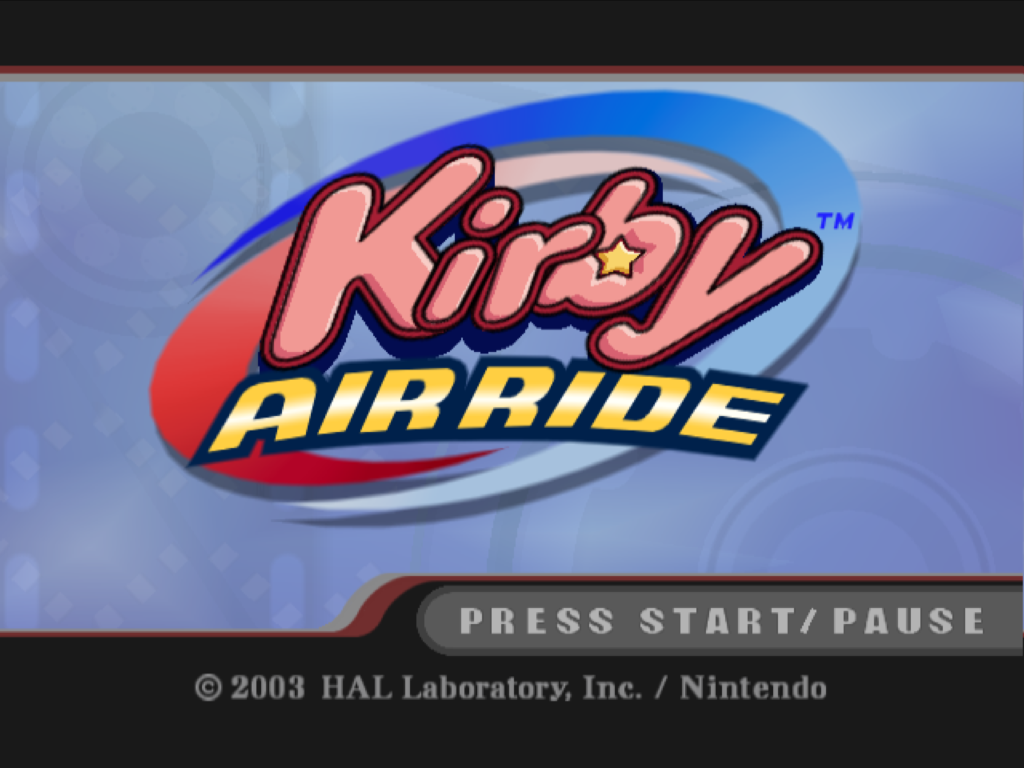
One of the best Kirby games isn’t a traditional Kirby game at all. Long before Kirby and the Forgotten Land finally worked out how the game should work in three dimensions, there was Kirby Air Ride, a Gamecube racing game that’s so weird. Kirby tools around on the Warp Stars that are his trademark ride through a number of courses at speeds usually only seen in an F-Zero game. There’s a variety of stars that can be ridden, more to unlock, it was the second game in which Meta Knight was fully playable, and the first where King Dedede was (unless you count short sequences in Kirby 64).
Kirby Air Ride had three modes, but they all felt a bit half-baked except for one. The standard Air Ride mode wasn’t bad, but could only be played one course at a time, with no overarching mode that connected them. That’s right, it didn’t have a “Grand Prix” mode. And the other competitors were only differently-colored Kirbys (Kirbies?) anyway. The courses were pretty good, but it didn’t give you much to keep you playing except for its checklist (which we’ll get to).
There was also a special racing mode that took place from an overhead view, on special one-screen courses, like Atari’s Sprint games, which felt even less substantive than the standard racing mode.
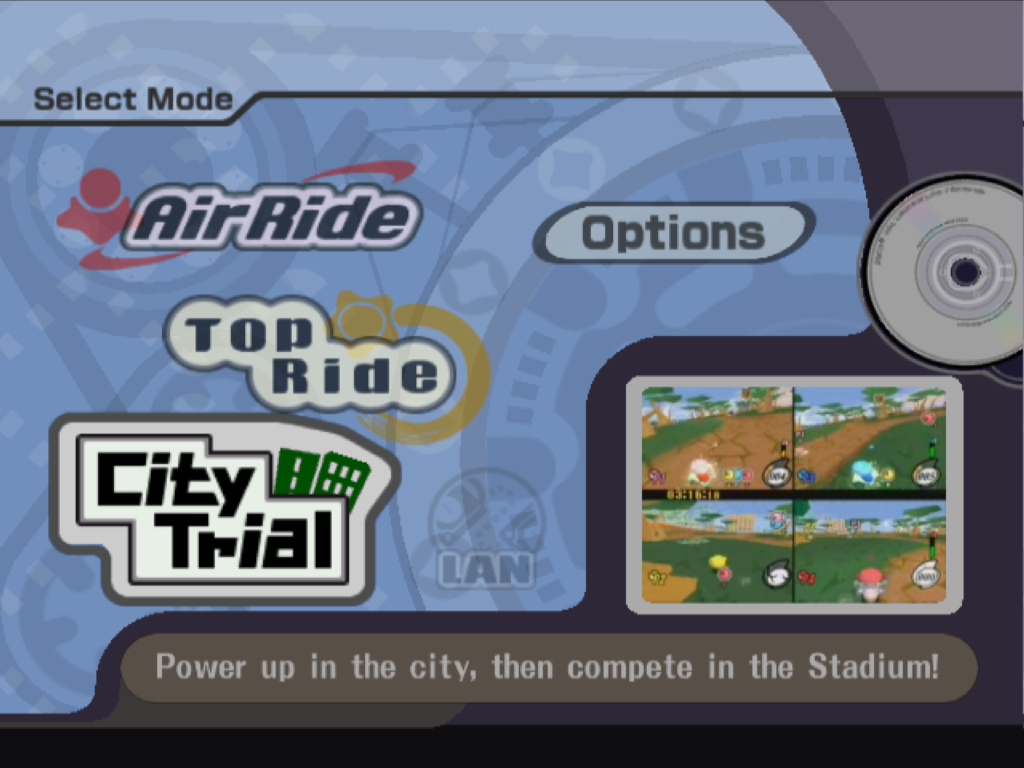
But the reason Kirby Air Ride is special, and the reason I still have my copy of the game after all these years, is City Trial, which is one of the most engaging racing game experiences I’ve ever seen. It’s really good. Not because it has any overarching structure the other modes lack (other than its checkbox screen). But because it’s so novel; no other game I can think of provides the kind of gameplay that City Trial does, unless you count Smash Run from the 3DS version of Super Smash Bros., which was also made by Masahiro Sakauri. But even it isn’t really the same thing, because you can’t interact with the other players during it!
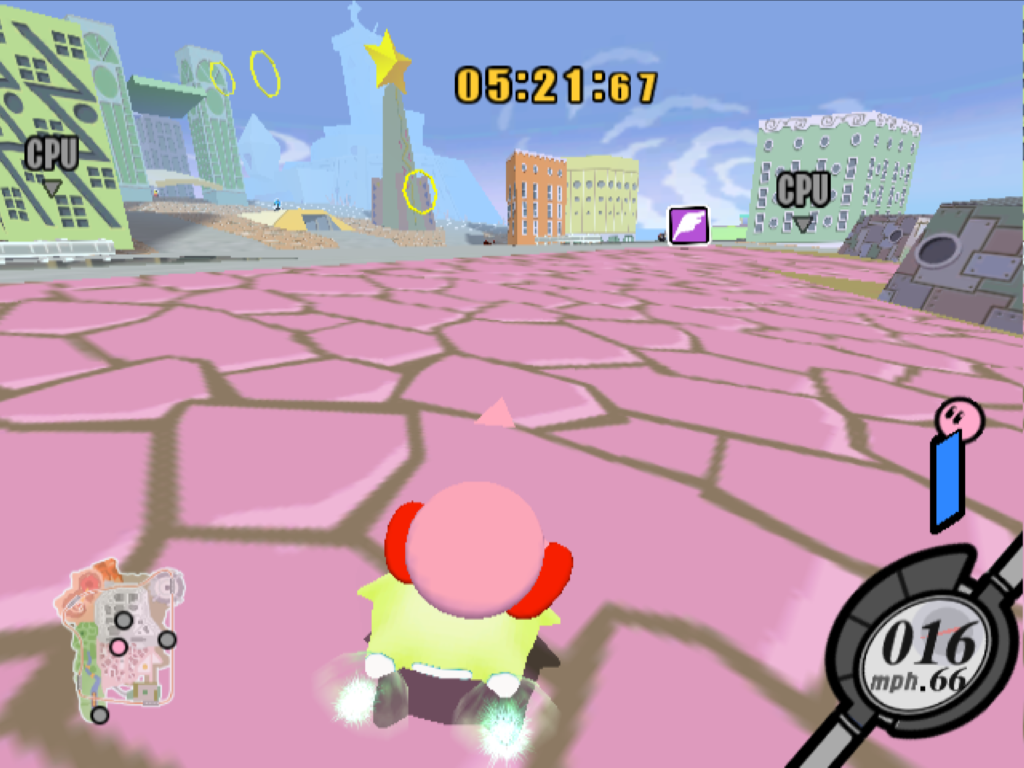
City Trial puts from one to four players, either human-played or computer-controlled, in a free-roaming city area. It’s not really a “race” at all. While the city is, spatially, quite large, the players’ warp stars are so fast that it only takes about 20 or so seconds from one end to the other, and the game also keeps you appraised of where the other Kirbys are with on-screen indicators and a map in the corner. Over a period of between three to seven minutes, you zoom around trying to collect powerups for your star. They come in a variety of types: Top Speed, Acceleration, Charge, Turning, Gliding, Weight and more, all taking the form of 2D icons scattered randomly around the city.
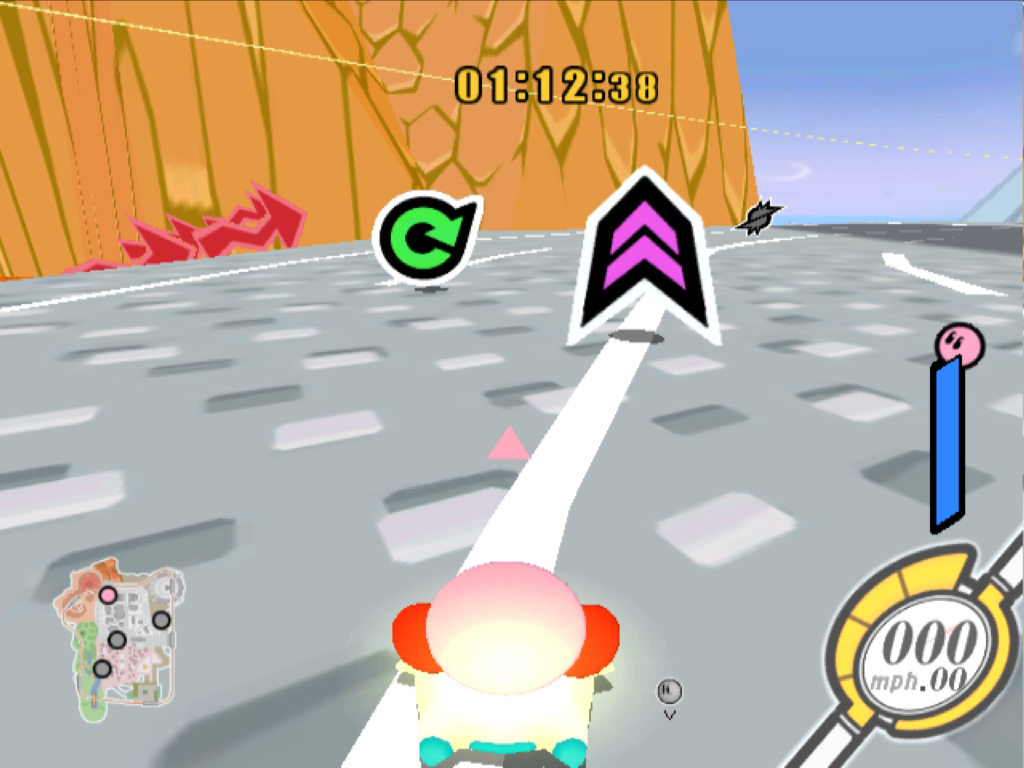
As you collect icons, each provides a small permanent (for the duration of the match) improvement in that one area of your star’s performance. Some are in boxes, which must be broken apart either by colliding with them repeatedly or spin attacks. Some of them are gray-colored, which are permanent power-downs.
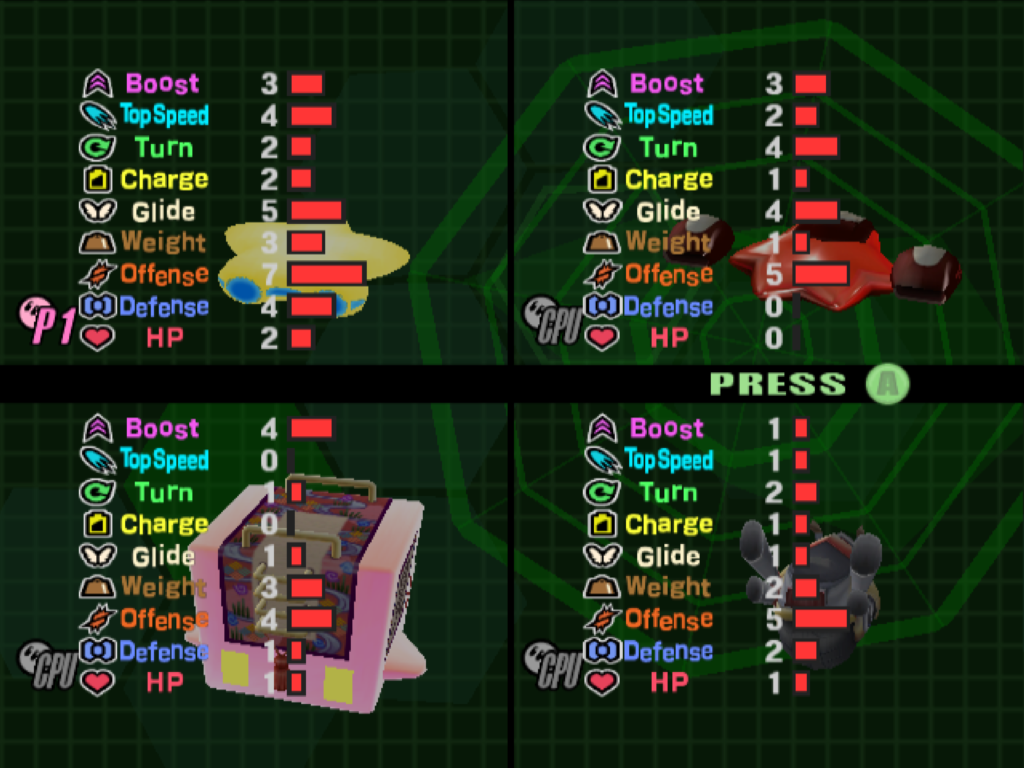
Throughout the time limit, you seek out and collect as many as you can. If there is a maximum stat you can reach I’ve never seen it; I think it can go at least as high as 20 icon’s worth, but it’s nearly impossible to get that high. It’s gratifying to feel your default “Compact Star” get steadily better and better as you snatch powerups. But also, there are other vehicles throughout the city, and you can get off your default star at any time by holding down on the control stick and the A button and board another one. All of the varied stars from Air Ride mode (some of which aren’t really stars at all) are present, and they all control really differently from each other. Some even have special properties, it’s not a case at all of them just having different stats. When you switch stars, you get to take all of your collected powerups with you, though if you have a lot you’ll drop some, and have to spend a few seconds picking them back up again.
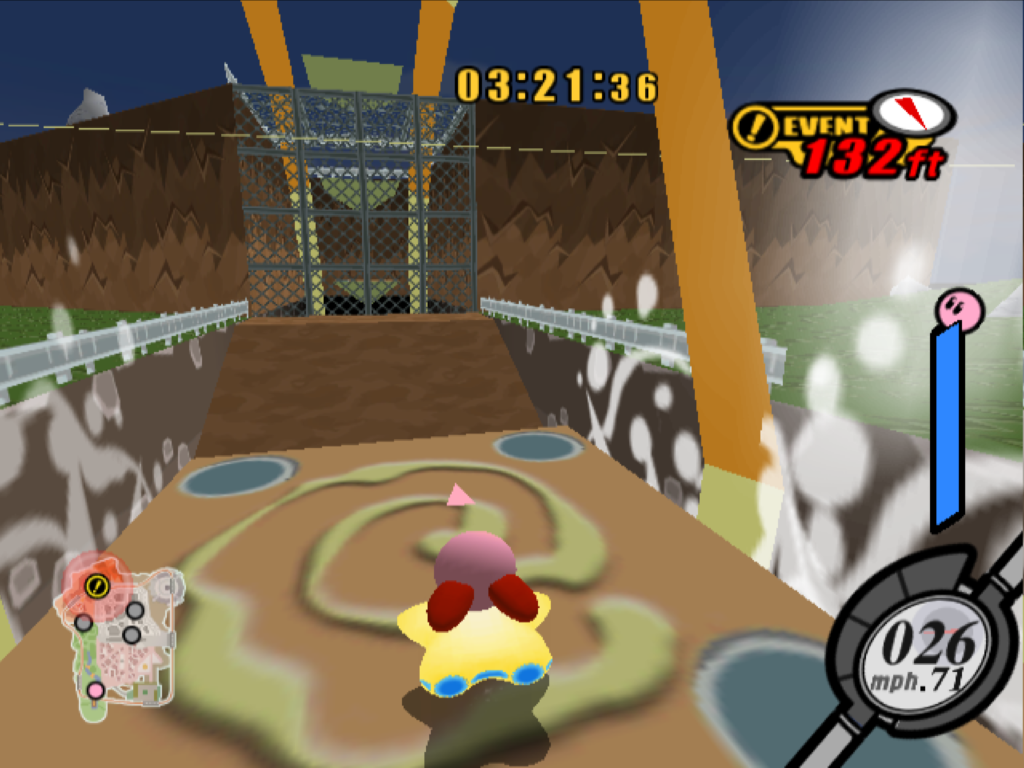
The amount of care that went into this one mode is almost shocking. You can attack other players and steal their powerups! You can even destroy their warp star, and force them to wander around on foot to find a replacement! Some of the traditional Kirby copy abilities can be found and used against the other players! There’s random events, with a lot of variety, that can happen, providing different dangers, or opportunities. You can sail out over the ocean on your hovering star. If you get enough height, you can fly over the invisible border wall and explore even more ocean.
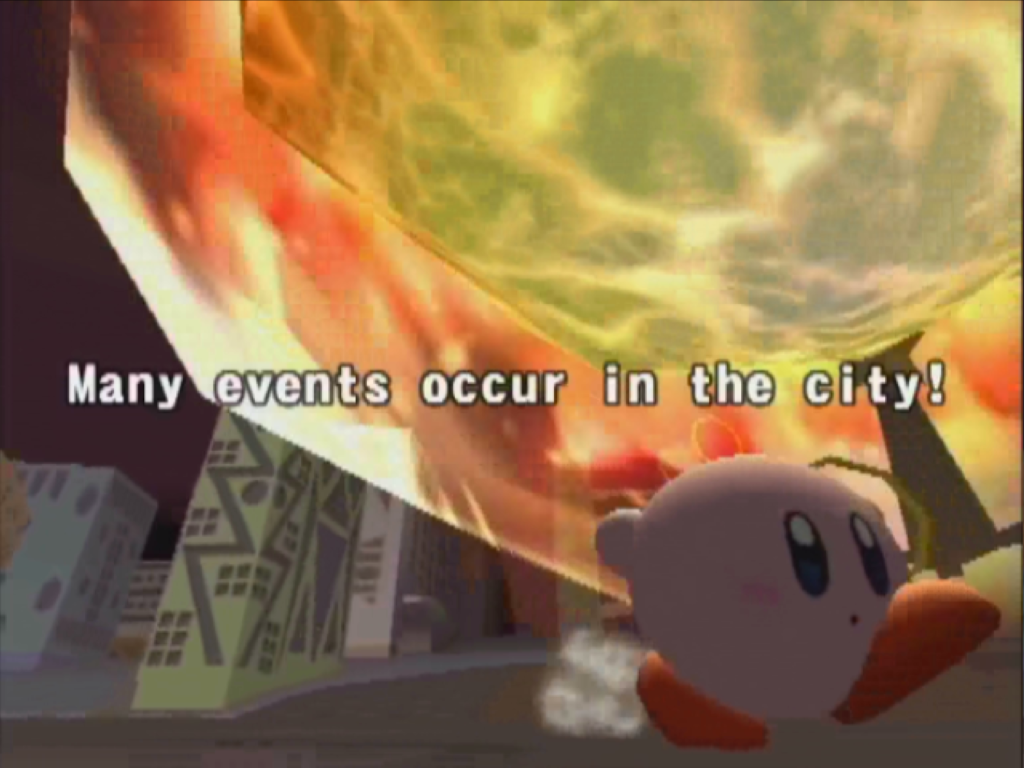
You can also collect Legendary Machine parts, which are hidden in some of the boxes. The Hydra, from the more recent Super Smash Bros. games, is a direct reference to this. If you manage to find all three parts, to either the Hydra (the green one) or the Dragoon (the red one), you get to ride it. They’re both ludicrously overpowered, although they can also be difficult to control.
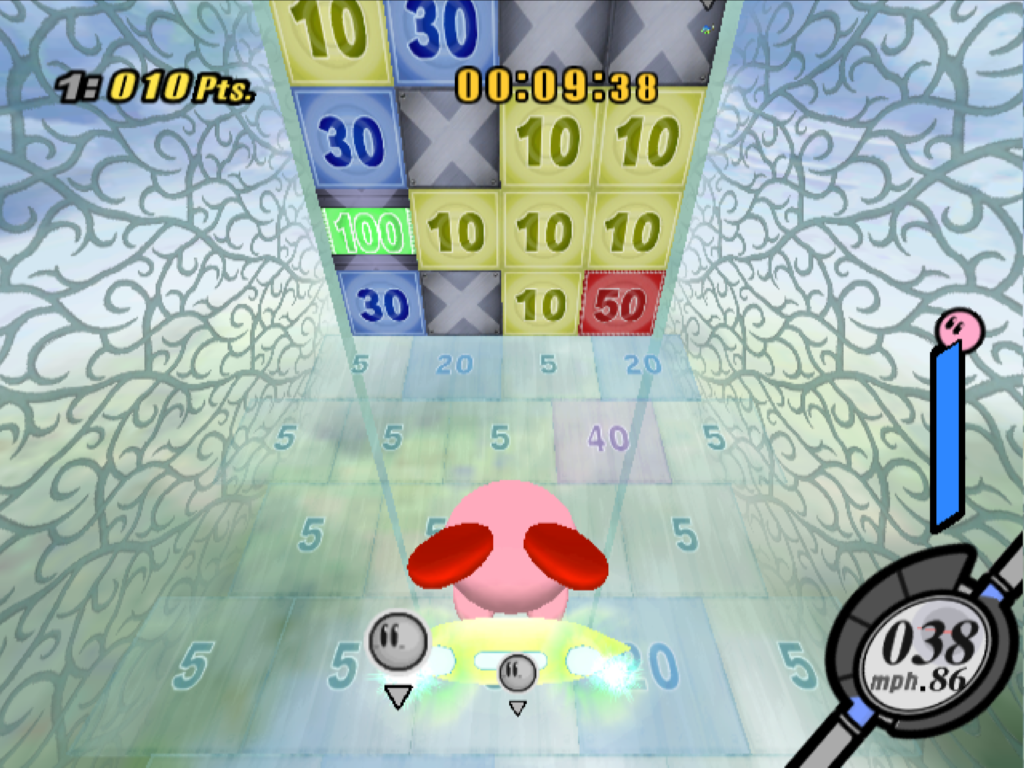
The real mark of genius in this mode is what happens when time runs out. The game shows a chart with everyone’s vehicle stats on it, then throws all the players into a random event. Your vehicle’s stats may make this event easy or hard! If you end up in an event where you have to attack enemies or aim to collide with targets, you might find yourself wishing you had laid off getting all those speed-ups, but plenty of the events are races too, including all of the race courses from Air Ride mode. How do you know what kind of event it coming up? There are two ways: sometimes, during the City Trial portion, the game will drop you a text hint as a message. (Hilariously, once in a great while it lies.) Or else, if you don’t like the randomness, you can choose broadly what kind of event will happen in the game settings.
Whichever player comes out on top in the event, the victory is short-lived. There is no huge victory celebration, no advantage to be gained. The game doesn’t even save player profiles. But City Trial mode is entertaining enough that we don’t really end up caring much? It’s even fun to play against computer opponents.
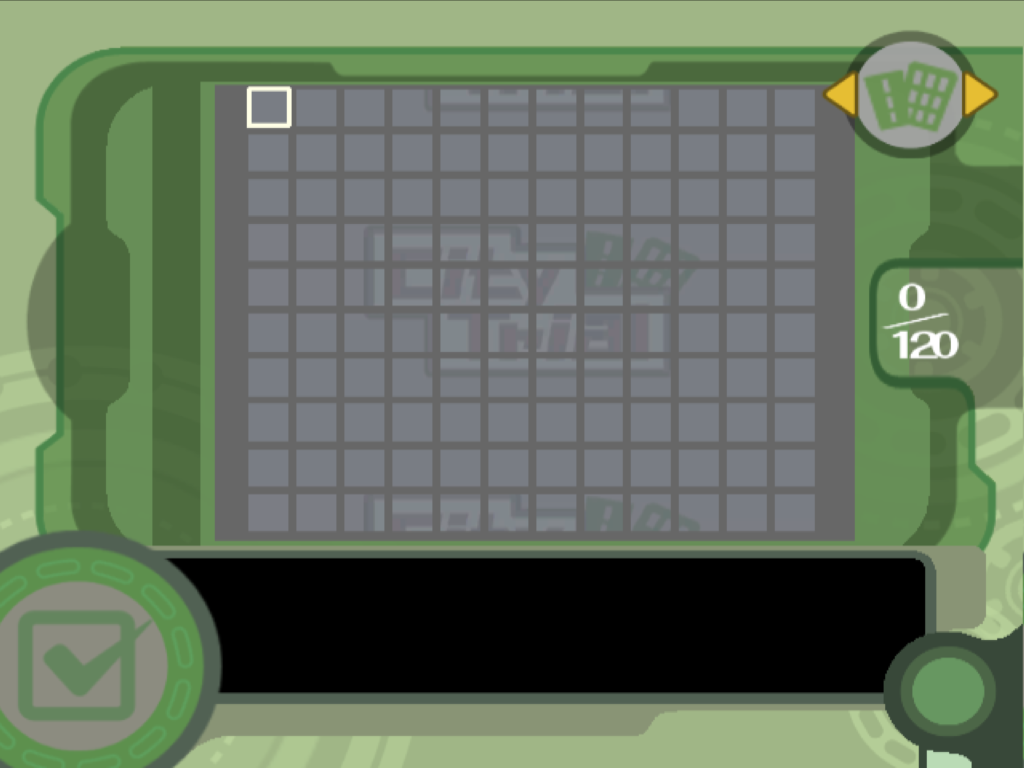
Each of the three modes in Kirby Air Ride has a “checklist,” a grid of squares, each representing some accomplishment, or at least occurrence, that can happen in its game. This is the closest thing Air Ride has to progression. If you’ve seen the Challenges in Super Smash Bros. Ultimate, this is the same kind of thing. All of the challenges are hidden at first, but when you unlock one, the requirements for the ones around it are revealed to you. Some of the boxes unlock things, like new events, being able to play as Meta Knight or Dedede in the practice mode, or more Kirby colors. But mostly it’s just something to give obsessive players (like myself) something to work for. In a racing game without even a Grand Prix mode (seriously what is up with that?), I’ll take what I can get.
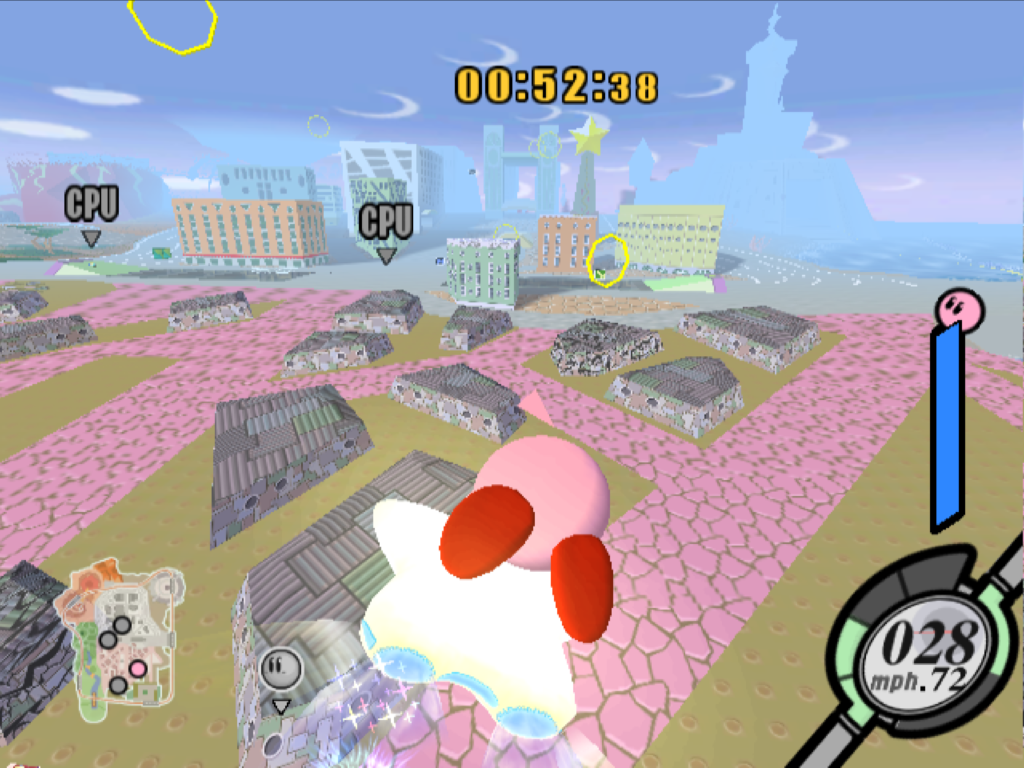
One more cool thing? Until fairly recently (and ignoring that non-canonical anime series), City Trial was our only glimpse into what day-to-day life was like in Dream Land. This city is evidently where Kirby and his friends live and play (I don’t think any of them have a job). There’s skyscrapers, a river, an ocean, an underground region, mass transit rails, a golf course (overseen by Wispy Woods), a castle and a volcano, and even “dilapidated houses,” which the players can demolish with their vehicles. I guess even Planet Popstar has a seedy part of its towns.
Apparently, day-to-day life in Kirbyland is spent in endless vehicular combat sessions. I’d like to say that I’m surprised, but for some reason, I’m not.
If you’d like to see how this works out in play, here’s an hour and 54 minutes of City Trial play, without commentary, on Youtube:
Revealed by Amber V at Automaton, Nintendo has gone on a spree of filing patents on features of The Legend of Zelda: Tears of the Kingdom.
Some of the software they’re trying to add the force of law to protecting include adding momentum of an object to a character standing atop it, figuring out what object the character is standing on, and showing a map of a place the player is fast traveling to during its loading sequence. What is it with companies patenting things that can be done during loading? Namco for a long time had a patent on minigames that could be played during loading periods, which is why for a long while (perhaps to this day) you have had to sit and wait for a game to complete loading before doing anything, instead of at least having fun during that time.
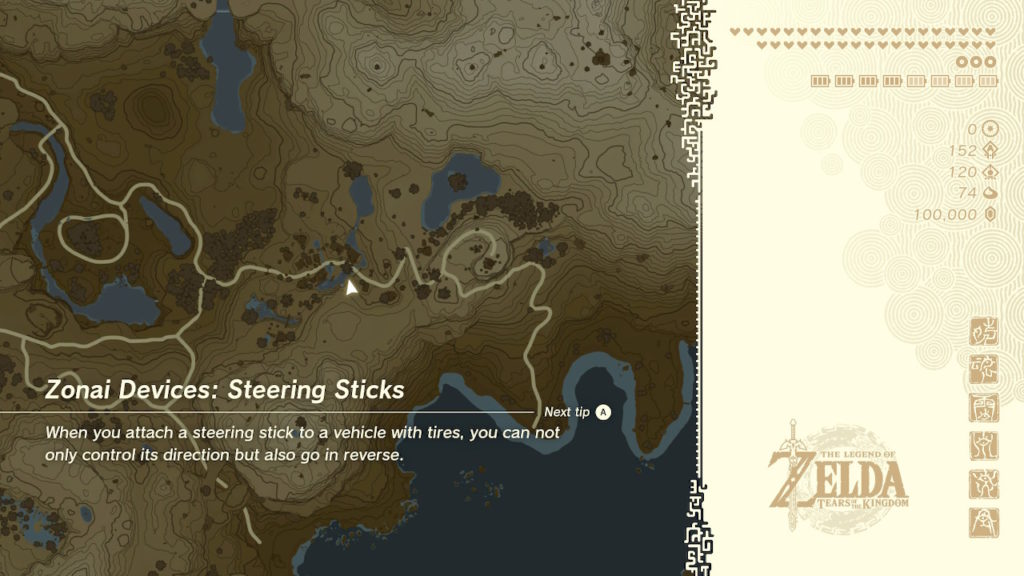
My stance, long-held and admittedly strident, is that patents should not be applied to software, ever, full stop. I am sure that some people might disagree with that opinion. They are welcome to, but I am unlikely to change their mind without a damn good argument.
Nintendo registers numerous new patents from Tears of the Kingdom, even for loading screens (automation-media.com)
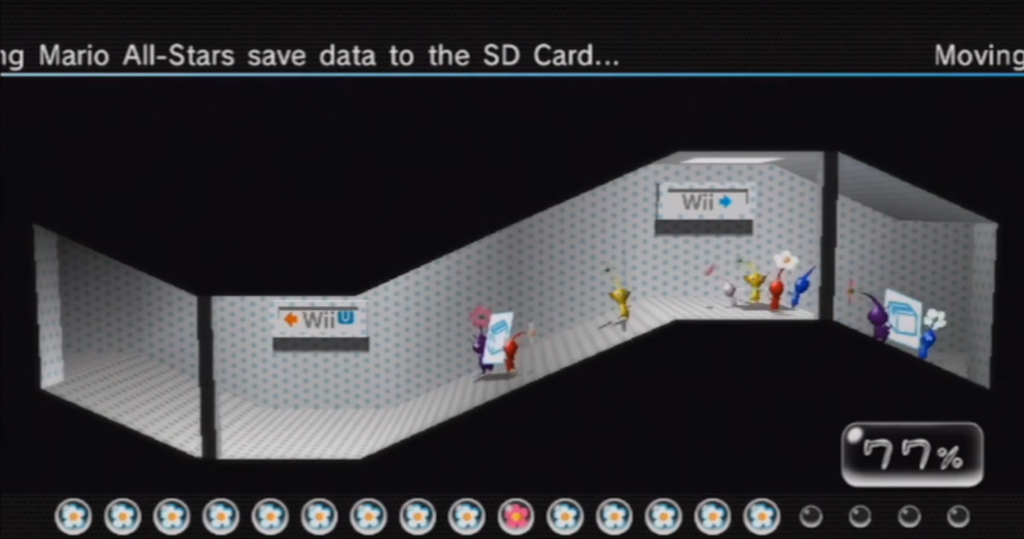
This would ordinarily go into a Sundry Sunday post, but it’s interesting for historical value. Unlike the Switch’s spartan interface, the WiiU took some of its UI design inspiration from the 3DS, which was a bit more playful. The 3DS supported theming the main menu, which is a feature that never came to the WiiU, but they both did support StreetPass, with the WiiU still having its little-noticed StreetPass server settings among its rainbow-colored settings menu options. And of course both systems supported the Miiverse, Nintendo’s failed attempt at its own gaming-focused social media service, which let users make text and drawing posts, tied in with their Mii feature (still in the Switch although much declined in prominence), and allowed Nintendo to send users information directly to players. Miiverse is gone now, has been for years, but some people I hear are working on a fan-led revival. I shudder to think of what will get posted there without Nintendo’s moderators.
Back to the interface. Probably the quirkiest of Nintendo’s UI creations was an animation that went with the tool, downloaded fro the Wii’s Shop Channel, that transferred system and shop data from the Wii into an SD card package to be transferred to a fresh WiiU system. It could have been a simple progress bar, but they had their developers create a charming (gee I use that word a lot) sequence where Pikmin, at that point only those from the Pikmin 2 game that had last been seen on Gamecube, visually bundle up all of the transferable software, use a walkway to carry it into a waiting rocketship, and jet off to a nearby sun marked with the WiiU logo. At that point, the user would be prompted to move the SD card to the WiiU, where after installing a corresponding tool from the WiiU’s eShop, the process could continue, with a matching unloading animation.
If you never had the chance to see this sequence (easily possible given the WiiU’s low sales), or just want to relive the process, here it is, both of the Wii to WiiU data transfer animations, at about eight minutes:
This video only shows the animation. If you’d rather relive the whole process, including system menus, instructions and warning messages, here is a 15 minute video that records it. It also seems to have a couple of scenes that aren’t in the above video, including the one depicted in the head image.
A brief personal story. When the WiiU came out I got one. The WiiU’s fate was already sealed by that point, and I got it pretty cheap from a local Target. By that time my much-played Wii had been suffering from some serious issues. It had been hacked many times, the Homebrew Channel installed and its boot software replaced.
People will tell you that doing this is only for the purposes of piracy, and that’s really not true. We put the Wii to use as a general media player. It lived mostly at a friend’s house, and whenever I would go over we would use it to watch movies and things from SD cards. We even watched a DVD or two that way; while the Wii had a DVD drive installed, Nintendo didn’t spring for the licenses to play DVD movies, so it was purely intended as a data drive. You could bypass that restriction with the right homebrew software, although it wasn’t great and didn’t seem able to do menus, so we almost never used it.
My Wii had put into heavy use for game and media playing, and I put on and removed a lot of software over time, in addition of course to hacking it several times. As a result, it had gotten quite glitchy. Sometimes it wouldn’t boot, sometimes it would boot okay but wait until getting some ways into a game and freezing, and sometimes, weirdly, it’d show the opening Health warning screen, but the letters in the font would glitch out, individually. It was really a sight to see.
As a result I was really glad to get the saveable data off of that system and onto hardware that was reliable. I had to go through the whole sequence more than once, as the console froze along the way a time or two, but fortunately I got it, and our large Mii collection, all off and onto the WiiU, where it still lives today.
Collecting and saving Miis, from friends and the nearly-forgotten Check Mii Out Channel, and the Mii Parade of random Miis sent from Nintendo, is an aspect of the Wii that has not survived to the Switch. I hope whatever successor the Switch gets has something like it. And bring back StreetPass too!
Wii to Wii U Data Transfer w/ Pikmin (Youtube, 8 minutes)
ZoomZike on Youtube has been working for years on a comprehensive series of videos going through all the Mario Party games, and breaking down what parts of each are a matter of luck, and how many are of skill. Along the way, they also serve as fine guides to winning at them, at least as far as you are able.
They’ve gone through the series, trending longer with each one, for each game from Mario Party 1 through 7 (with an April Fool’s stop over at Advance). Even the shortest is at least an hour, and the most recent one is over five hours. That might seem like a whole lot, but imagine how long it took to construct! These are really deep videos, often with odds figured out through exhaustive, and exhausting, trial and error.
Mario Party 7 is the last of the four Mario Party games that came out for the Gamecube, even beating out the N64 portion of the series by one game. The early MPs were notorious controller destroyers, often resulting in the dreaded white dust of death, a result of ground plastic, emerging from the controller after heavy play. The Gamecube had controllers that weren’t as susceptible to wearing out, and so were better suited for the demanding play that Mario Party provides.
Anyway, here is the video, all five hours and 25 minutes of it:
And, here is the direct link:
Identifying Luck in Mario Party 7 (Youtube, 5:15)
From the recent trove of preserved video from Noclip Game History Archive, here’s a look through Nintendo Of America’s internal employee-only museum/store, circa 2006, on Youtube. There is very little sound in the footage, so you might want to increase the playback speed to double.
For context, it was near the end of the Gamecube’s life, immediately before the release of the Wii, and the early years of the Nintendo DS. Objects glimpsed during the stroll include various consoles, records of Nintendo’s collaboration with the Starlight Children’s Foundation, Pokemon merchandise, Nintendo awards, some arcade units (including a glitched Mario Bros. cabinet), a Virtual Boy, various character statuettes, old playing cards, a capsule timeline of Nintendo history, and various games for sale at the time. It seems that the museum also functions as a retail space for employees.
Exploring Nintendo of America’s Employee-Only Museum (Youtube, 28 minutes)
Displaced Gamers‘ Behind the Code series doesn’t get new videos often, but they’re always great. This one is more technical than usual, but I don’t think it’s really all that technical. It’s about how the NES processes and renders its sprites, particularly explains why there’s a eight sprite per scanline limit, and even reveals a couple of games that use that limit to produce special effects!
The gist: while each scanline is being prepared for display, the NES’ PPU looks through the entries for the machine’s 64 hardware sprites in order, finds the first eight that will display on the current line, and copies their attribute data to a small area of internal RAM. There is only space there for eight sprites, so, the NES cannot display more than eight sprites in a single scan line. Any later sprites in the primary attribute data won’t have room to be copied, and so the PPU won’t be able to display them.
One thing it notably doesn’t cover, however, is how games implement priority shuffling to cause sprites to flicker instead of not display at all. The video suggests that that might be coming in a future video….
NES Sprites, OAM, and the Battle for Priority – Behind the Code (Youtube, 19 minutes)
Let me tell you something about Nintendo games. While I have no knowledge from inside the company, either the Japanese or American sides, what I’ve seen over the years makes me pretty confident in this knowledge. There is a good chance it applies to other companies too, but I’ve noticed it most often from Nintendo. I share it now with you.
First, can you tell what the messages in these images have in common?
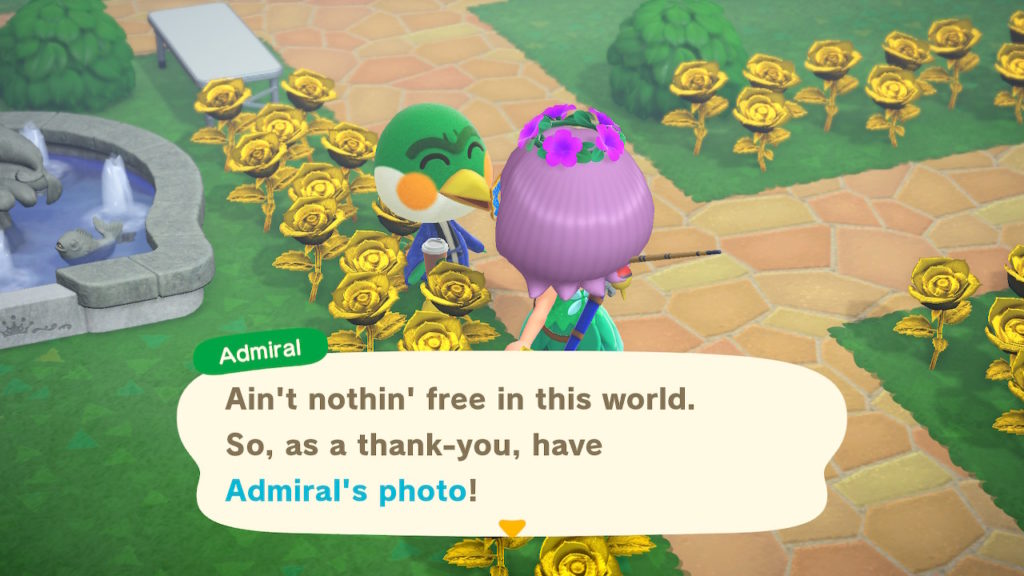
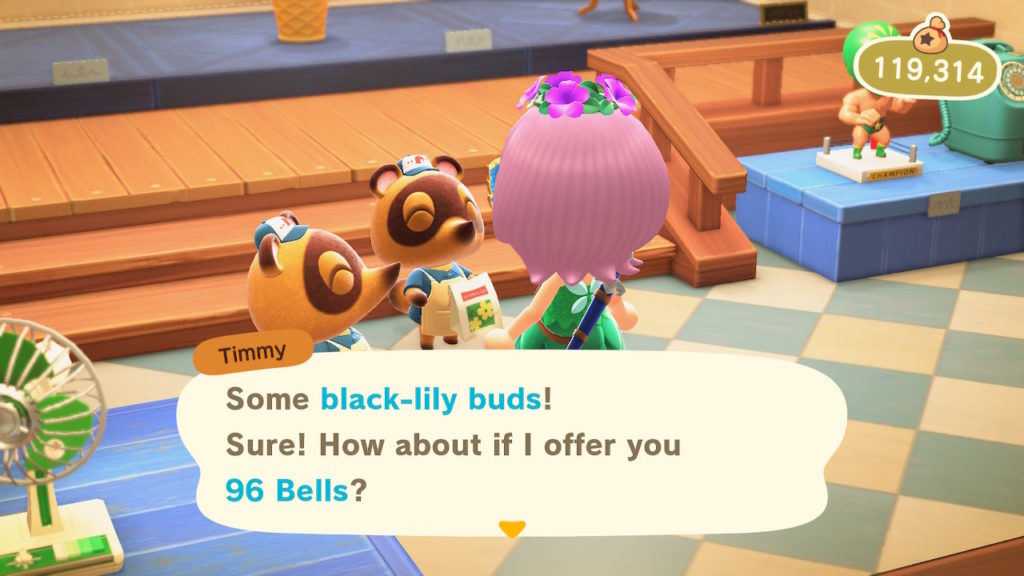
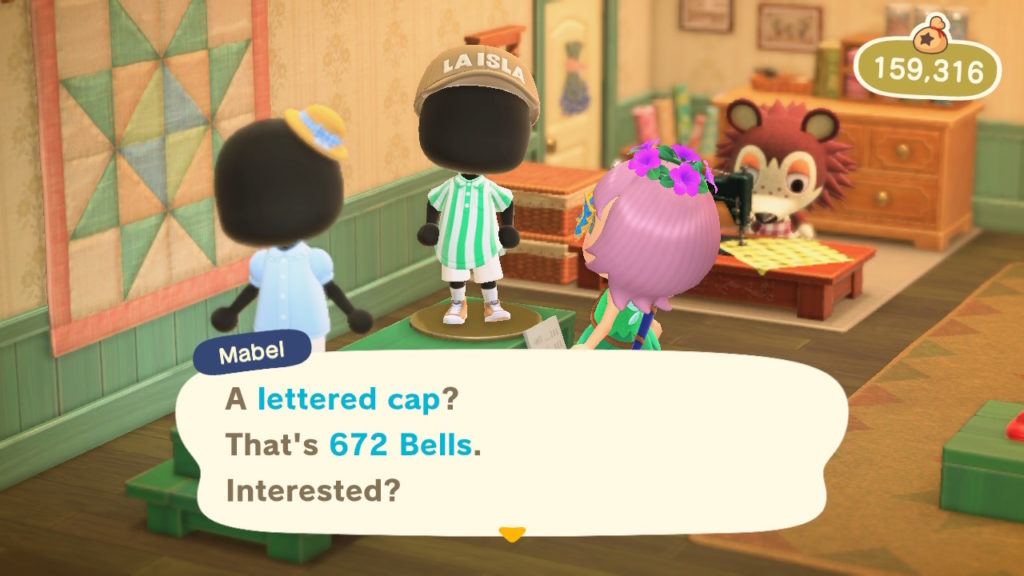
They all contain item names, but what’s more, they’re all written in such a way that the item name (along with whatever introductory articles it requires) is on a line to itself.
Nintendo games are written in Japan, and then localized to other countries. Localization usually involves translating, sometimes adjusting, the text, and sometimes graphics, to other languages. This process usually involves a bare minimum of engine work; the coding is largely ready for release at this point. It’s not supposed to need changing the code itself much, for localization.
Japanese fonts are mostly monospaced. Hiragana, katakana and kanji, the three kinds of Japanese characters, are depicted in them all with glyphs of the same size. I’m not sure this is why, but I think there’s a good chance it’s the reason, that text boxes in Nintendo games tend to not support that essential feature to all word processors made in the past three decades: word wrap. It’s not needed for Japanese generally, for the text will be written with newlines embedded. Most text isn’t dynamic, so it usually isn’t a problem.
Once in a great while, due to a localization error, this becomes evident. I remember seeing once a text line in Ocarina of Time, in a dialogue in Kakariko Village, where the text extended outside of the message window. It’s a bit surprising when it happens because usually Nintendo is good about catching it.
However, there is a weird implication of the need to keep all the words properly bordered within their message boxes: if a string has a dynamic part at all, a place where the text can vary, then the text around it must be written to account for the widest text that can possibly be put there.
This is generally true for most games I’ve seen, but where I notice it most frequently is in Animal Crossing games, which have a lot of dynamic text, and must account for the widest possible player, villager and, especially, item names, some of which are pretty long.
It is for this reason that, if a dialogue in an Animal Crossing game contains the name of an item, the other text on that line must be kept pretty short, to prevent the text from overflowing the bounds of the message box. Which is a pretty onerous localization requirement, when you think of it. As a result, the majority of dialogue texts in the game are written in such a way that the item name comes at the end of a sentence, so the inevitable following line break looks natural. This means a lot of characters in shop dialogue begin with an interjection of the item name followed by an exclamation point, so it won’t be so obvious that there’s going to be a lot of white space after the item.
Here are a few more examples from New Horizons:
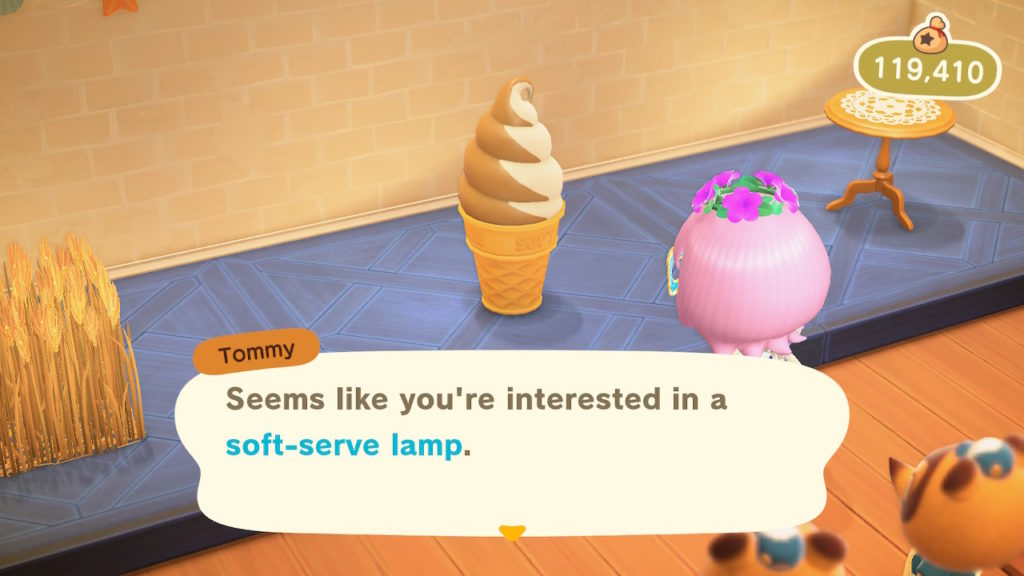
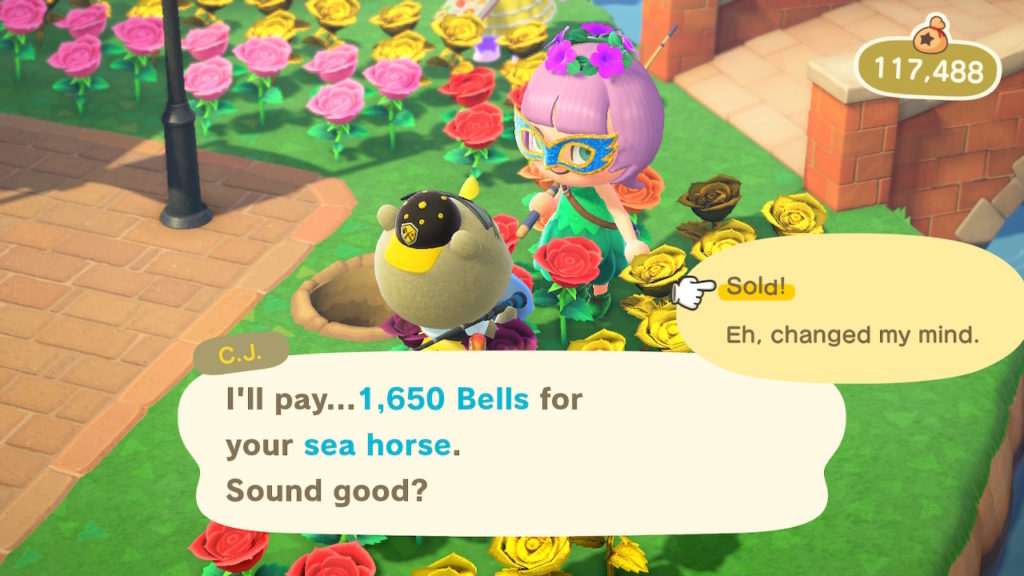
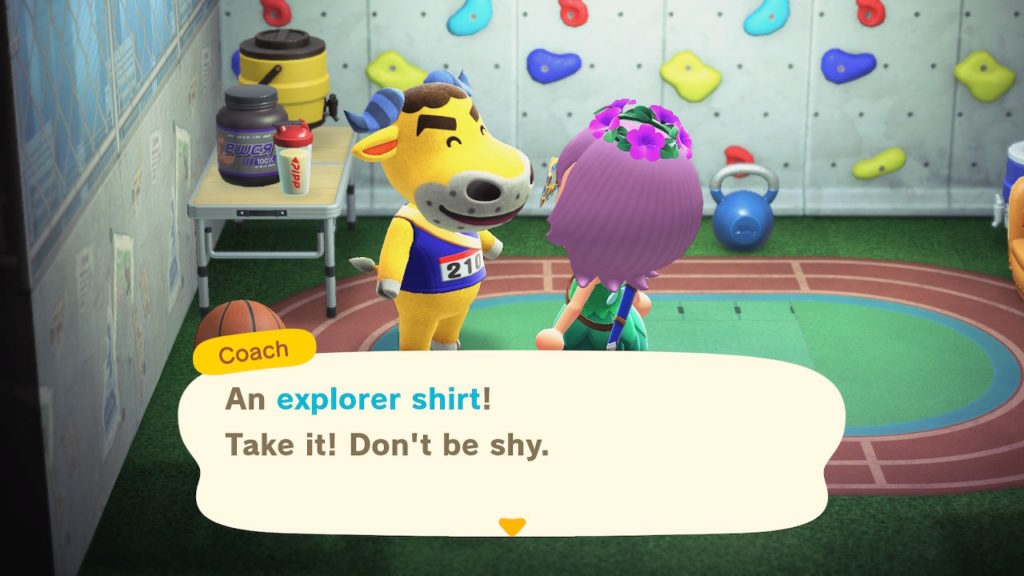
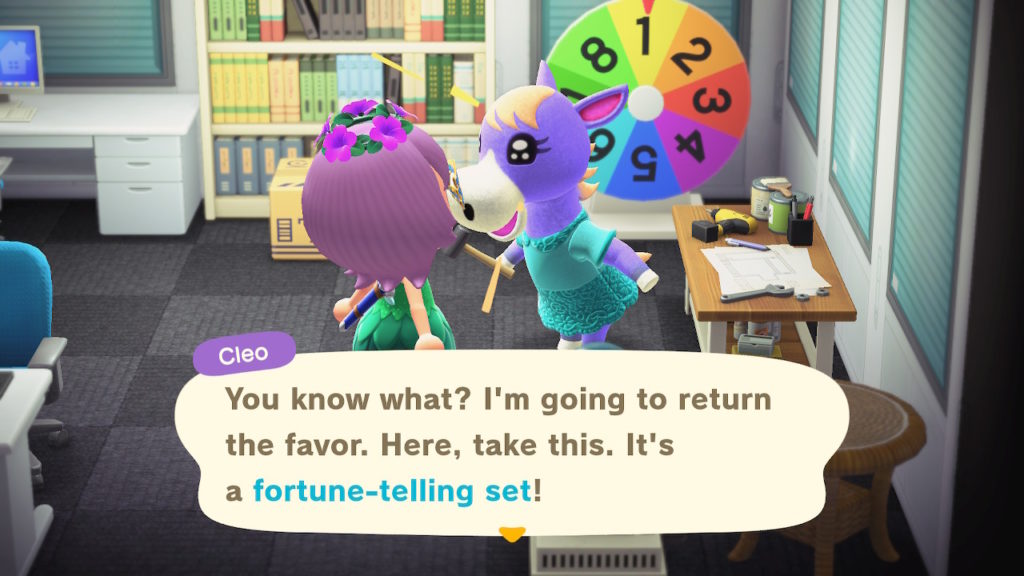
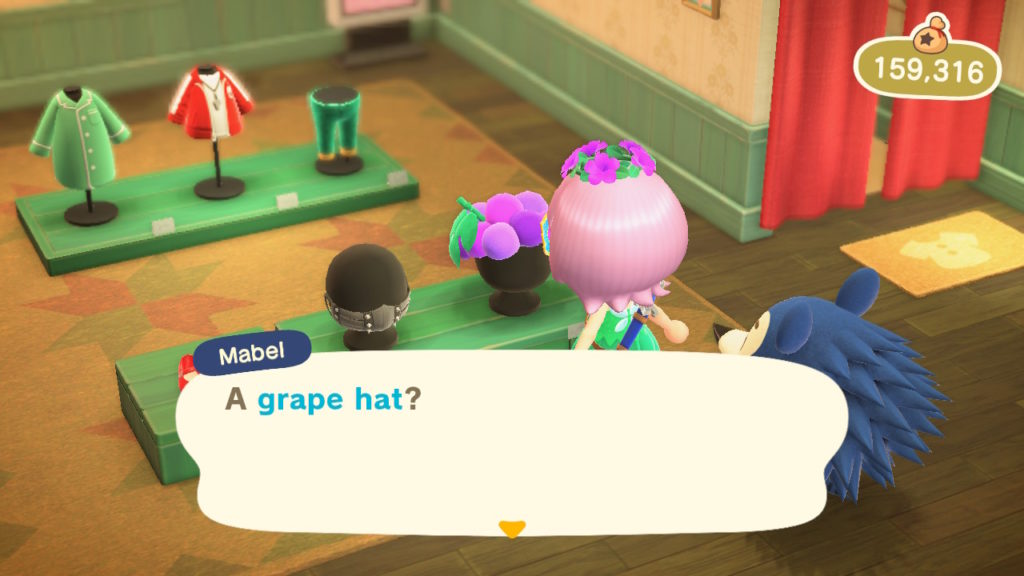
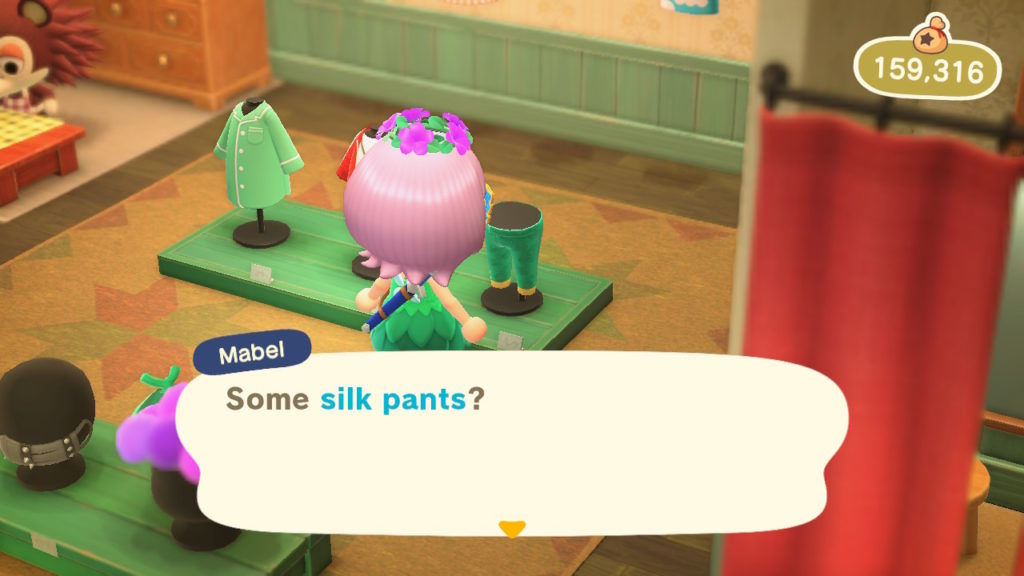
Remember when Pikmin 2 came out on Gamecube? It marked a considerable departure from the first game’s structure. Pikmin had a hard time limit, and it was rather a rush to complete the game within its 30 days on your first try. Pikmin 2 dispensed with that, giving players as many days as they wanted. It also had “dungeon” areas, semi-random underground mazes where even the day timer was paused. A considerable portion of the game was in those underground areas.
One of the less-remembered things about Pikmin 2 was that it had actual product placement in it. Many of the treasures you found were outright commercial objects, modeled and textured in the game, some with vaguely promotional names, like “Courage Reactor” for Duracell Battery, or “Quenching Emblem” for a 7-Up bottle cap. Even the European and Japanese versions had these, although they reflected products from their territories instead.
Presumably because the licensing deals for these objects have expired, the Switch 2 version of Pikmin 2 uses different, more generic items in place of the trademarked originals. The replacements are an interesting lot. Where they could have just removed the old textures and replaced them with solid colors, they put in fake ingredients lists (too small to read), “Established 1920” notices, fake slogans and logos, notices of product quantity in Imperial units with metric equivalent, and more. You’d almost believe Olimar was finding real goods from Earth, ones that you just haven’t heard of. The tip-off is, the names of the replacement products are just slightly too generic. “Coconut Water” and “Night Lip Balm” are descriptive but generic, and so but really able to be trademarked. They’re a nice batch of fake brands though. For “Pineapple Fresh Slices,” they even made up a realistic-looking US-style Nutrition Facts label!
The differences have been recorded in a video by ModenXP on Youtube, embedded below:
And now, as an exercise in overkill, here’s a list of all the old and new versions, and interesting things about the replacements:
| Courage Reactor (280 poko) | Duracell D-Cell battery | “Electric Power Super Battery,” a fake brand that replaces the multiple Duracell items among the treasures. It’s also a D cell. There’s a warning box that’s too small for me to read. |
| Quenching Emblem (100 poko) | 7-Up bottle cap | Bottle cap for “Spicy Ginger Ale, Premium Quality.” There’s some other text along the outer edge that’s just on the other side of the readability afforded by the texture compression. |
| Alien Billboard (80 poko) | Kiwi Shoe Polish, 1 1/8 ounce (31 gram) size | “Shoe Polish, highquality shoe care.” “Established 1920.” The size is 32 grams, “1,128 OZ” in the British style, using a comma as the decimal separator instead of a period. The slogan “Shine & Protect” runs along the outer edge of the lid. |
| Drought Ender (100 poko) | Old-style Dr. Pepper bottle cap | A bottle cap for “Coconut Water,” evidently a product someone would want to buy. The rim assures us, twice, that it is in fact “100% Pure Coconut Water.” Promise or threat, you decide. |
| Survival Ointment (90 poko) | A tube of ChapStick lip balm | “Night Lip Balm,” with “Extra Moisture.” Lots of tiny unreadable text on this one. |
| Gerkin Gate/Flavor Gate (100 poko) | A lid to a jar of Vlasic pickles | The only item with a different title. This is “Orange Jam,” “Made With Real Fruit,” “Organic Homemade Product.” 13.4 oz (380 grams). Shouldn’t they have just called it marmalade? |
| Creative Inspiration (100 poko) | Old-style bottle cap for RC Cola, eternal third-place in the cola wars | “Delicious! Black Berry Soda.” One of the more generic logos. |
| Patience Tester (130 poko) | A can of Sun Luck water chestnuts. How many company ad departments would let a licensor get away with implying their product tests one’s patience? | “Pineapple, Fresh Slices.” “In heavy syrup.” Oh, joy. (I don’t like pineapple, and pineapple syrup is not something I would ever care to try.) It’s interesting that they changed even the type of product here, although it’s the same sized can. |
| Healing Cask (60 poko) | A jar of Carmex salve, “FOR-COLD-SORES.” Even though the lid looks like it’s from the 50s, I think this is how the product looks even today. | “Organic” Aloe Vera Cream. Nice stylized rendering of a plant on the cover, but otherwise pretty ordinary. |
| Salivatrix (30 poko) | A lid for Dannon “Fruit on the Bottom.” Fruit on the bottom of what? It doesn’t say! It does tell us it has “Same Great Taste!”, but again, the same great taste of what? The mysteries belie this treasure’s paltry value. Bee the why, “Salivatrix” sounds like an enabler of a particularly niche kink. | “Morning Fruit Yogurt.” Aaah that’s right, Dannon makes yogurt! Did they remake Pikmin 2 just so they could fix their omission? Blueberry, and Low Fat, Net Wt. 15 oz (425.25g). Thanks for the two decimal places of metric accuracy, fake yogurt lid. |
| Thirst Activator (300 poko) | Cap to a bottle of Tree Top juice. What variety is left unspecified. One of the little jokes of the game is how far off the retail value the Salvage Pod’s valuation of your treasures is. 300 poko is pretty valuable! | “FRESH Organic Fruit Sauce.” The name is still Thirst Activator though. Brings to mind gulping down a nice hearty jar of Ragu’s finest, mm-mmm. Both versions of the treasure have arrows telling a consumer which way to open the jar. |
| Massive Lid (100 poko) | Old-style cap to a bottle of Yoo-Hoo Cola. Cola? The internet is mum as to the history of this mysterious product. I don’t want to imagine what it was like. | The cap now reads “Mountain Water.” It’s a metal bottlecap, as if to a glass bottle. At least it’s recyclable. The title is odd; it’s a small cap, there’s plenty of bigger lids in the treasure hoard. |
| Happiness Emblem (100 poko) | Another old-style bottlecap, this to a can of Squirt grapefruit soda. Squirt, a Dr. Pepper brand, is still made and sold even today. | Ginger Ale LIGHT. Has an ingredients list right on the cap, just like the Squirt cap had. The ingredients are even readable: carbonated Water, high-fructose corn syrup, ginger extract. Hey, I’d drink it. Nintendo’s localizers know their territory. |
| Durable Energy Cell (160 poko) | Duracell C-Cell battery. | Electric Power Super Battery, again, Duracell’s counterpart in the Pikmin ludomatic universe. |
| Endless Repository (130 poko) | A can of Beach Cliff Sardines, “Proudly made in the USA” and “in soybean oil.” | “Sardines, Skinless & Boneless.” “In olive oil & lemon.” The “pull ring easy-open” and fake UPC code are nice touches. This is one of my favorite fake products, even though I’ve never eaten a canned fish in anger. |
| Pondering Emblem (100 poko) | Cap to a bottle of Yoo-Hoo Chocolate Flavored Beverage. The pondering part of it is wondering what the hell Yoo-Hoo is made of. | “Milk Crown” Cream Soda. Nice stylized representation of a splash of milk. The cap tells us “artificial flavor & color.” Remember to demand natural flavoring and coloring from your fictional video-game beverages! |
| Abstract Masterpiece (30 poko) | A Snapple Cap. You can’t flip it over to see if there’s a Snapple Fact on the bottom. | Sunny Tropical Juice. “What kind of juice?” “Tropical.” At least the label tells us it’s made from the best natural fruit. No synthetic fruit here, oh no no. |
| Optical Illustration (140 poko) | Lid to a jar of Ragu tomato-based sauce. I joked about it, and lo, it has come into being. There is very little optical here, and it hardly qualifies as an illustration | “Tomato Basil” homemade pasta sauce. One of the faker-looking treasures. |
| Activity Arouser (100 poko) | The “W”-logo from the lid of a can of Wilson tennis balls. | One of the few overtly fake brands, with a logo of a flaming tennis ball and the cryptic word “TARAI” in a sci-fi font. No other information is supplied. This mystery is going to haunt me. |
| Proton AA (90 poko) | Duracell AA-Cell battery. | The third of the Electric Power Super Battery collection. It looks a whole lot like one of those battery brands you can find at a dollar store, that last roughly 23 seconds when put to use. |
| Drone Supplies (130 poko) | Underwood Deviled Ham Spread. A really distinctive package, round but wrapped in paper with a unique fold at the top. | Tuna Salad Spread. The kept the paper wrapping. This is the one with the realistic Nutrition Facts label on the back. |
| Fuel Reservoir (120 poko) | Duracell 9-Volt battery. | Last of the Electric Power Super Battery set. |
| Fruit Guard (130 poko) | A can (not just the lid!) of Tree Top apple juice. The words “Apple Juice” are not written in Comic-Sans, but it does look a lot like they are. | FRESH Organic 100% apple juice. FRESH seems to be the replacement brand for Tree Top. At least it’s not drinkable fruit sauce this time. Also has a Nutritional Facts label on the back (as does the original). |
| Nutrient Silo (130 poko) | Skippy creamy peanut butter. | Ribbon’s peanut butter. They made a cute little logo involving a pair of cartoon peanuts for it! I demand fan art of them immediately, get to work! Also has a Nutrition Facts box and fake barcode. |
| Yellow Taste Tyrant (100 poko) | The yellow, unpainted plastic lid of a wide-mouthed container of French’s mustard. The French’s logo is molded into the surface, and seems to react to light, which is interesting. | A green painted illustration of a hot dog with the words “Hot Mustard” twice. The modeled French’s logo is gone. |
| Stringent Container (130 poko) | A canister of Clabber Girl baking powder. | The canister is of “Baking Powder,” “Queen’s Quality,” “Double Acting” and “Gluten Free.” Established 1932! Like the original, has both nutrition facts and a recipe, here for a chocolate muffin. You can just make out that a “serving” of this can of baking powder has 55 calories. At the bottom of the nutrition facts it says “European Leading Brand.” |
| Hypnotic Platter (100 poko) | Bottle cap for A&W (presumably) Root Beer. Caffeine free. | “19TH Anniversary” premium orange juice. Apparently sold in soda-style glass bottles? |
27 Treausres that Changed in Pikmin 2 on Switch (Youtube, 14 minutes)
I’ve mentioned Kaze Emanuar’s efforts to make the best Mario 64 there can possibly be on its native hardware. He’s compiled it with optimization flags turned on, made its platforming engine much more efficient, and worked hard to minimize cache misses, which was a major source of slowdowns in the game’s code. Under his efforts, he’s gotten the engine running at 60fps (although not yet in a playable version of the original). While these optimizations are not the kind of thing that can keep being found indefinitely, he’s bound to run out of ways to tune up the code, currently he’s still finding new ways to speed it up.
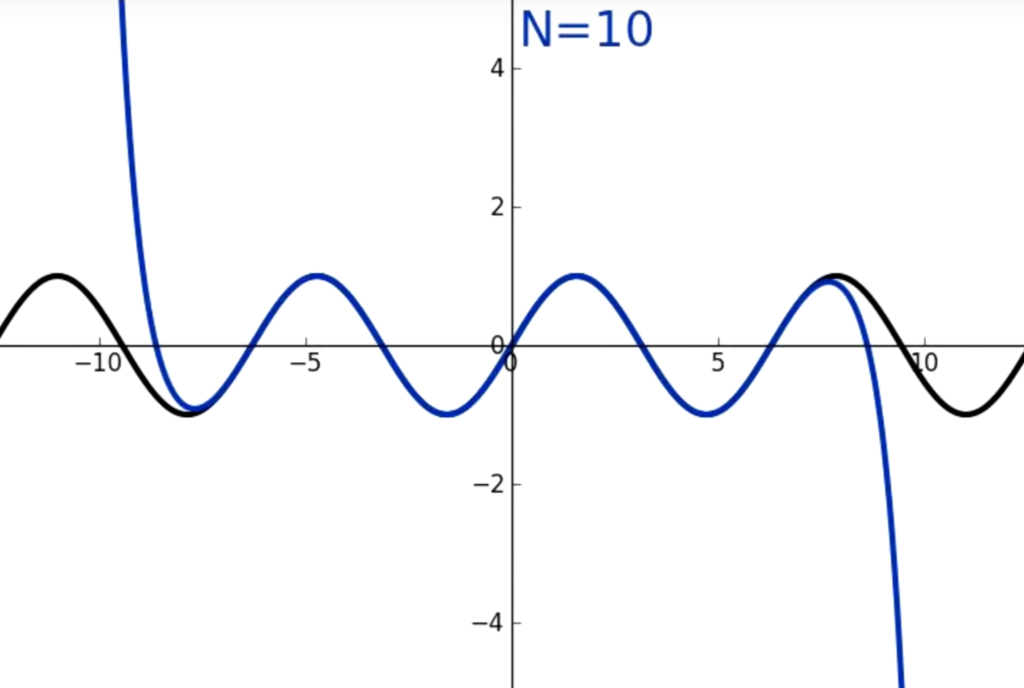
He made a Youtube video detailing his most recent optimization find: getting the game’s trigonometric functions executing at their speediest. What is interesting is that the Mario 64 code already uses a couple of tricks to get sine and cosine results in a rapid manner: the game only uses 4096 discrete angles of movement direction, and contains a lookup table that covers each of those angles. But it turns out that this optimization is actually a mis-optimization, because the RAM bus hits incurred to read the values into the cache are actually more expensive than just figuring out the values in code on the N64’s hardware!
The video starts out decently comprehensible, but eventually descends into the process of figuring out sine and cosine on the fly, and the virtues of the various ways this can be done, so you can’t be faulted for bailing before the end, possibly at the moment the dreaded words “Taylor series” are mentioned. But it’s a fairly interesting watch until then!
Satellablog is a blog dedicated to preserving content from one of the least-documented portions of Nintendo video game history, that short period in their life where they distributed software via satellite broadcast, over the St. GIGA service.

Most of this stuff only exists, maybe, in company archives deep in the halls of Nintendo, and the data from the last broadcasts saved on aging flash memory cartridges held by subscribers. It is believed that all of the dumps that have been made available have come from those cartridges, and Satellaview is dedicated to finding them and making them available.

There are a number of interesting finds in this batch, including lost Dezaemon shooters, a cut-down version of Super Famicom RTS Bounty Sword, a non-playable demo of Elfaria II. But the most surprising thing in the collection is a number of dumps of a Satellaview version of Nintendo’s website circa 1999, one of the last things they made available over Satellaview! I had no idea that the service survived that long!
Satellablog: The biggest batch so far (Part 1)
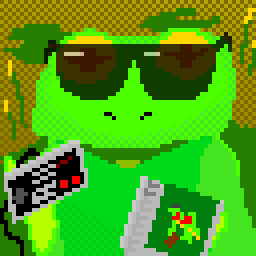
On Romhack Thursdays, we bring you interesting finds from the world of game modifications.
Let’s get back to talking about other Zelda games than the 800-pound, battery-powered, flame-spouting, spike-studded elephant in the room.
I make no apologies for it: I love Zelda II: The Adventure of Link! It’s second only to the original game for me, and I’ve probably played it, in its unaltered form, more than The Legend of Zelda by now. Because you can play enough of TLoZ that it becomes kind of boring, but a game of Zelda II is never a guaranteed win. There’s just enough randomness in it to mess you up once in awhile, even for speedrunners, and while you can do things to account for it, you can never completely negate it. Bots, those blue blobs that jump at you, exist to humble overconfident players. They look like weak enemies, and don’t do much damage once you have some Life levels, but there is always the chance that they’ll ding you. I love that. It has a very high skill ceiling.
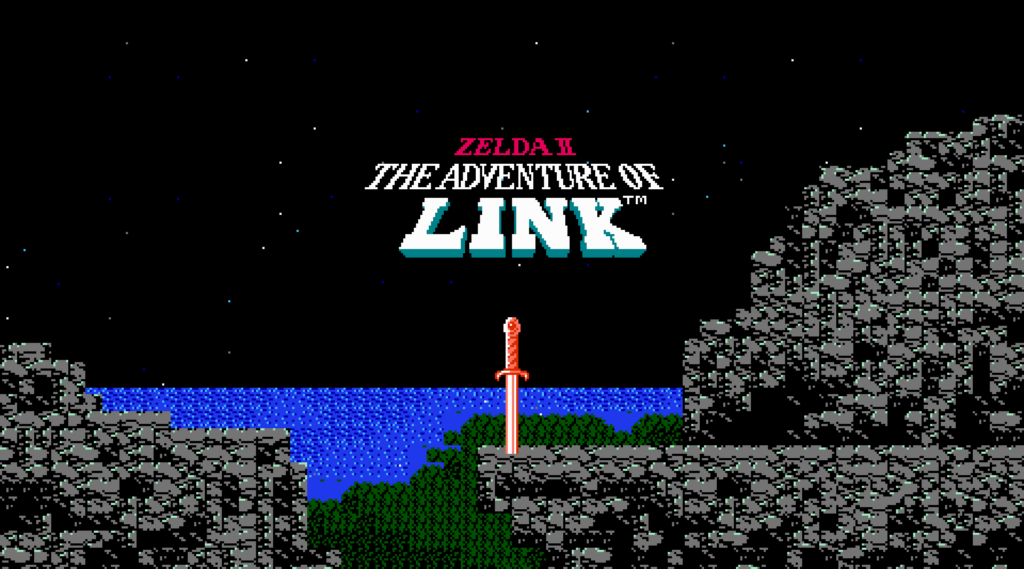
Zelda II has long been regarded as the black sheep of the series, like how many Nintendo series have second installments that play with the formula. It’s the only Zelda with an experience system, it’s the only one with a separate combat screen, and it’s the only one with a system of extra lives.
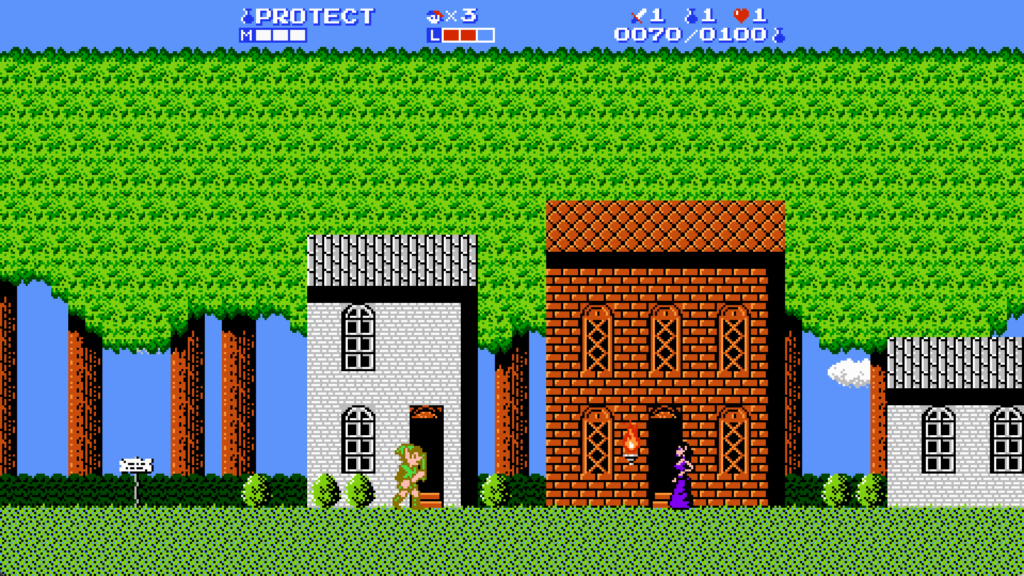
It is also the only Nintendo-made Legend of Zelda game, released pre-Breath of the Wild, that has never been remade in any way! Zelda I had BS Zelda, the first Satellaview one; Link to the Past had both a Satellaview update and one for GBA; Link’s Awakening has been remade twice. Ocarina of Time has Master Quest and the 3D version, Majora’s Mask is also in 3D on the 3DS, and Wind Waker, Twilight Princess and Skyward Sword all have HD revisions. That leaves Zelda II.
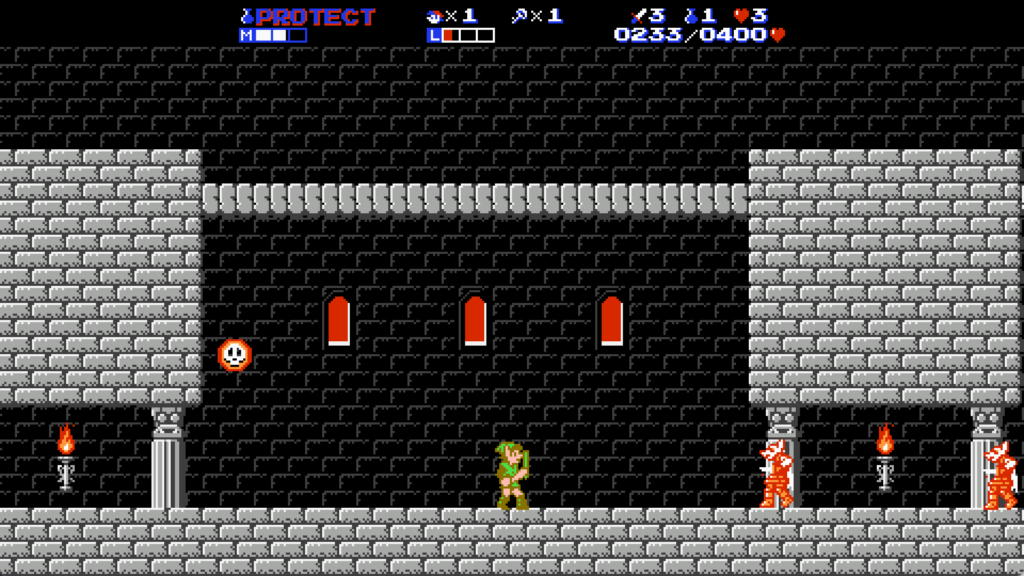
To further heap laurels upon it, I say it’s the Zelda with the best combat! The newly-teenaged Link has a sense of weight and inertia to him that fits swordfighting well. It works so well that it seems like an obvious thing, but the fact that so few other games do swordfighting so well proves how difficult it is to get right. Breath of the Wild and its sequel have good combat, but silver-level enemies in it are just a bit too much of a damage sponge, and appear too often in the late phases of the game.
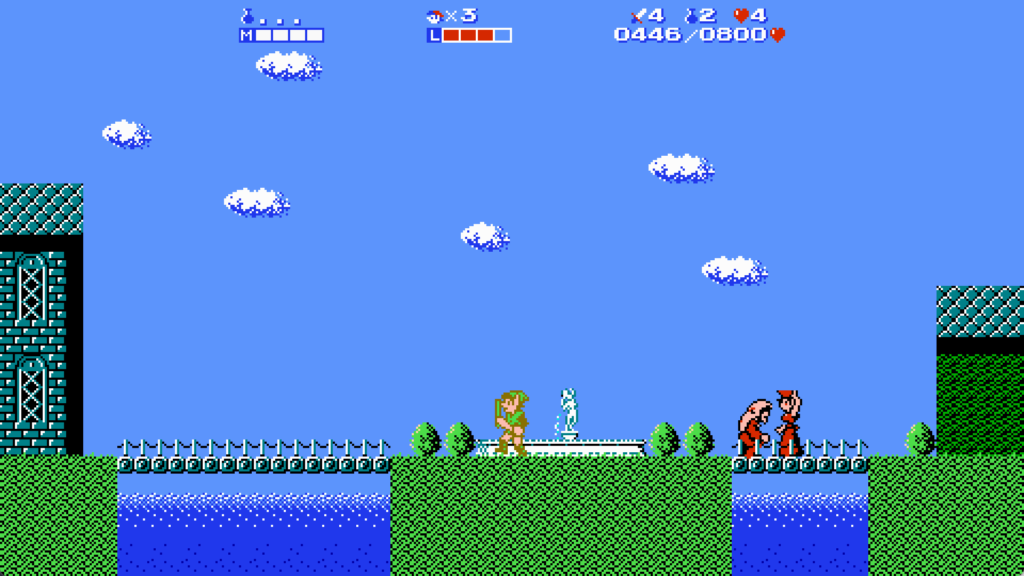
Now I’m bending the rules a bit by including this game because it’s not a romhack, it’s a fan remake. But it looks like a romhack. And the game follows Link’s movement from the NES game very closely. If he moves any differently than he did in that outing 36 years ago, I can’t point to how. Any skills you have from playing Zelda II will transfer over exactly, which is good, because they are hard won.
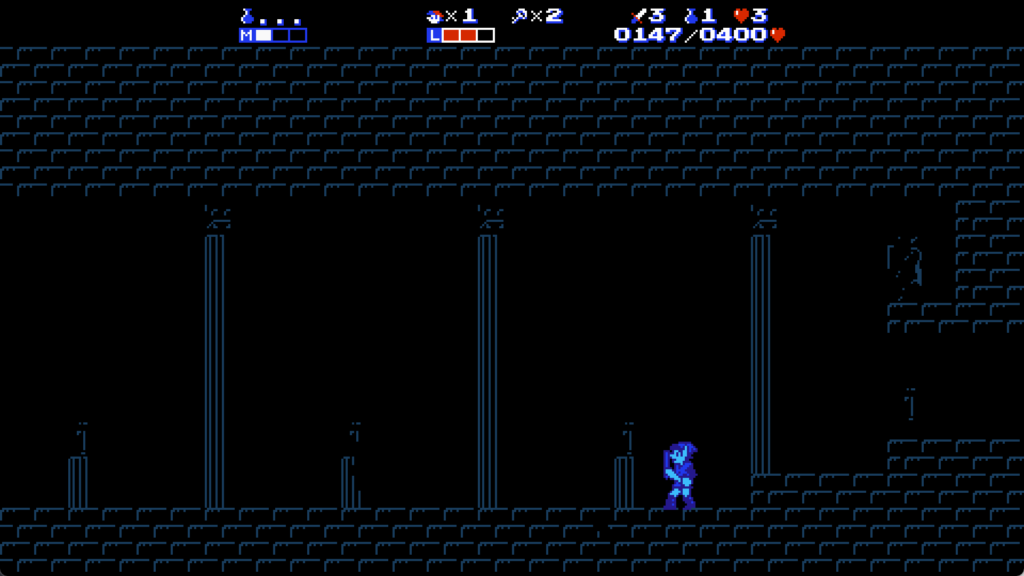
Unlike A2MR, the fan recreation of Metroid II: Return of Samus that Nintendo cruelly quashed, this game has only slightly upgraded graphics, it all looking like it could have been done with the original engine. It’s not, it’s made with Unity, and it pulls out just a couple of effects it’d have been hard, if not impossible, to have done on Famicom-level hardware.
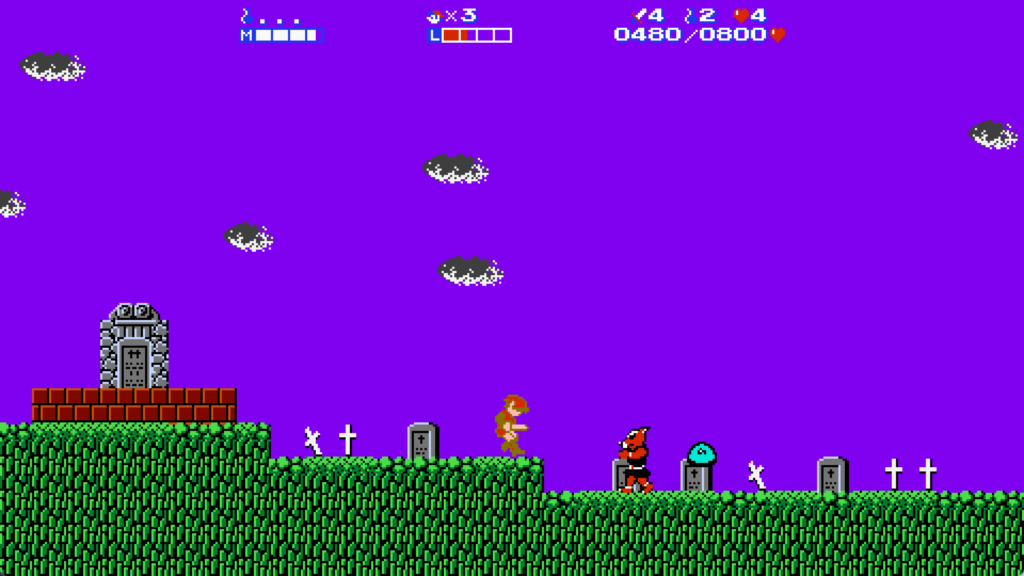
Beyond that, the game’s structure is not greatly changed. The basic map of North Hyrule is similar to the NES game. There are differences, sometimes big ones, but the game still has the same feel, enough so that people who have played a lot of it on the NES will immediately know much where to go and what to do. There’s just a new wrinkle in some places.
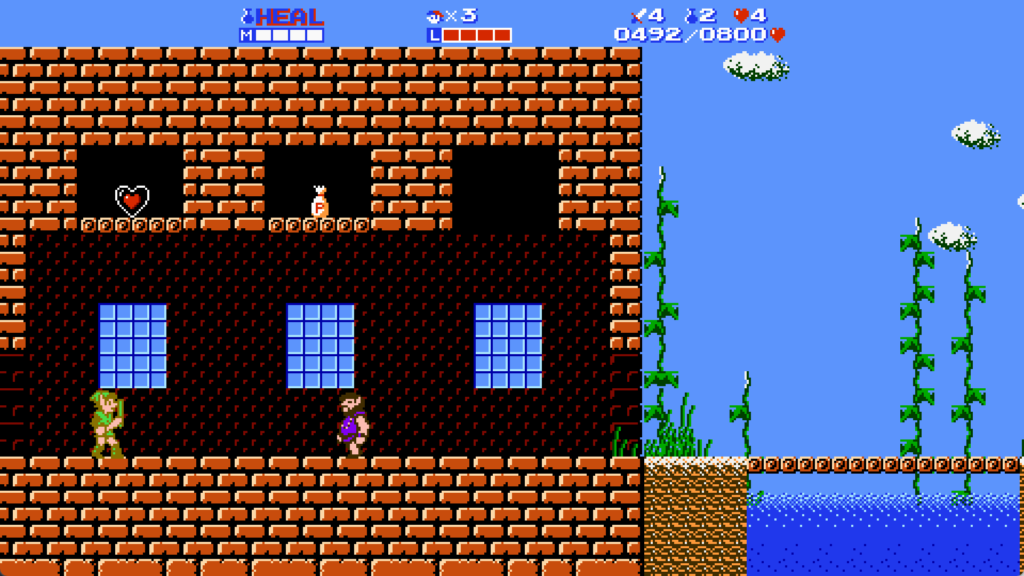
ZIIAOL is, I must emphasize, an even harder game than Zelda II. It’s really made for people who are familiar with the original. To pick just a few instances of its higher difficulty: you only start with three units of health and magic instead of four, you must find three Magic and Heart Containers to improve that stat, there are new subquests and places to find, and some areas are slightly randomized. (The game also has its own built-in randomizer, if you really want to mix up your game.)
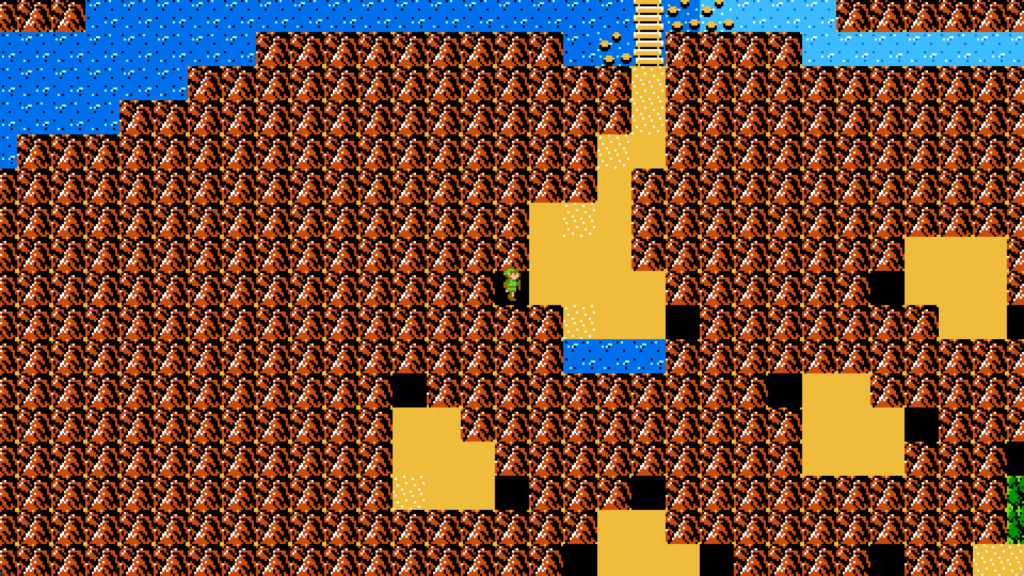
Yet, of many of the enemies that had tricks to beating them, the tricks still work. I’m thinking especially of its infamous knight enemies, the Ironknuckles, which sent a generation of kids screaming away from the TV. Yet, once you know their trick, to jump and hit them high on the way down, in the helmet, they become fairly simple to beat. The same trick works here, which is a huge relief. (If only it worked in the combat Timer game on the recent Zelda Game & Watch!)
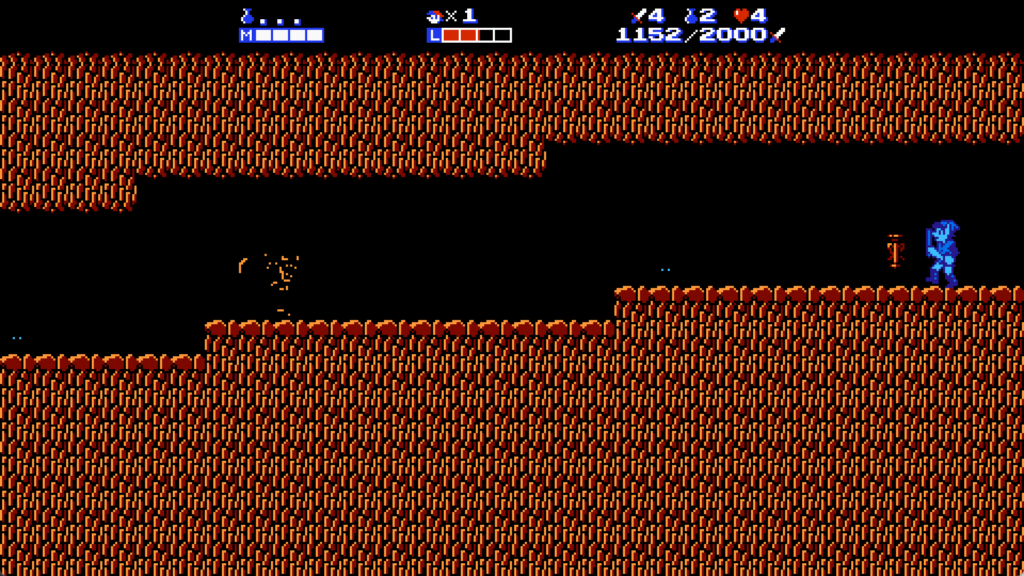
Anyway. It’s free on itch.io, and if you have any interest in the original, or NES games in general, it’s worth it to give it a shot. You’re going to die a lot, but that’s probably going to be true of the original too. But they’re fun deaths.
Why is it called by its initials, “ZIIAOL?” My guess is, it’s probably to help it stay off of Nintendo’s radar. I have used the name from their itch.io post in case it helps them in this goal.
ZIIAOL (itch.io, $0)